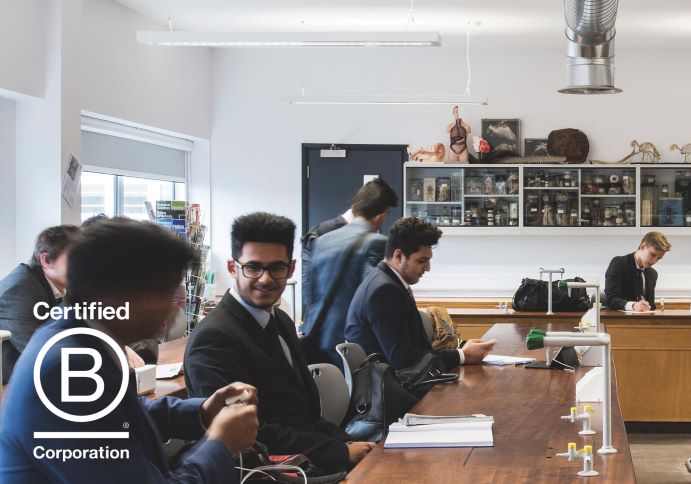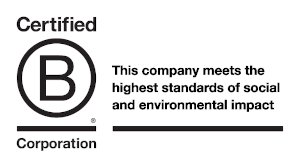How can we create social value through design?
For this blog I have interviewed Catherine Ramsden, the founder of Useful Studio (and Useful Projects’ Director of Design) on a theme that is very close to heart for many employees of the Useful Simple Trust and in recent years has reached a wide audience in the built environment profession: creating social value through design.
Could you tell us how the approach to creating social value through design became a feature of your architectural studio?
“Since I founded Useful Studio in 2013, creating social value has been a very strong theme throughout all of our design work, and the way we run our business; we are a certified Social Enterprise and have recently become a B Corp (business for good).
My experience with creating positive social impact through design goes back to the very beginning of my career when I started working in environmental design and sustainable development and planning in California. When I later joined Fosters and Partners in London, key projects included social housing, public footbridges and state schools. All of these projects have huge social implications. These experiences led to the realisation that design can really have a big impact on society and people’s wellbeing and interactions with each other, both within the immediate scope of the built project as well as a wider ‘ripple’ effect. If design is successful, it is incredible to see how it can help places thrive though your contribution. This is hugely rewarding to witness.
Good design has always had positive social impact, it’s just that in the past we were not referencing it so directly or studying its qualitative and quantitative impact. The shift in focus towards creating social value in the past 5 years or so, and this new-found awareness/understanding means that this added value to our design can actually be measured and demonstrated to clients in practical ways using industry-recognised terms.
What has been for years termed ‘thoughtful design’, where the client’s and users’ needs are at the centre, not the designer’s, is explicit in our approach.”
Are there any projects that you are particularly proud of, which have clear beneficial social impacts?
“Certainly. Let me tell you about Ilford, Redbridge. This is a town in a relatively deprived area where there is a regeneration project called Spark. The council has repurposed the spaces within the town hall, because they were underutilised, and turned a car park into a food market which is under development now. A third part of the regeneration, and where we came in, is to take an old factory building and do a very light touch conversion that will provide space to nurture start-ups in the medium term (five years). The challenge was taking an existing building, doing a super light touch minimal refurbishment using circular principles, to enable people to use it on a temporary basis, and be inviting enough to attract start-ups and a communal vibe. It needed to become a playful, interesting place on a very lean budget. The project went on hold last year due to the pandemic but during that period the people continued to fill a gap, becoming a venue for PPE distribution.
The idea going forward is to create a buzzing environment of start-ups with temporary circular economy-based solutions and an environment that is fertile ground for community-enhancing initiatives.
Another project is part of the Meridian Water regeneration project in Enfield. We are involved in the design of footbridges and building on one of the 3 key pillars, ‘Our Place to Make and Create’, we used design as a tool to enable delivery utilising local carpentry skills and industry. We designed a bridge that was fairly low-tech, in timber, with bolt connections, and could be realised with a very small skill upgrade as well as with new trainees. If we could expand this concept to other infrastructure design in the area, we can guarantee 20 years of work and the gradual upskill of people in the area through apprenticeships and self-delivered workshops. This local approach is both socially and economically beneficial in local communities where regeneration is happening. And, most importantly, a long lasting legacy rather than the ‘sweeping in and out’ approach.”
Ideally social value would be considered right at the outset of projects, rather than just during procurement and construction. How do you propose this becomes normal practice?
“We need a mind shift. Designers need to become more aware that their designs have the ability to provide increased wellbeing of the communities they touch – beyond the immediate product. Ideally, they would embed social value considerations at the outset. During the design stages, they should actively consider local conditions and local needs, as well as providing design-related employment opportunities for disadvantaged people.
Engaging the local community, local charities and business as co-designers and fabricators, will improve the sense of ownership and creates support for projects, adding value during the approvals process as well.
It is important for designers to shift from being architects to being catalysts for positive social change, to drive long term positive transformation in the communities they are called to intervene in.”
This all sounds very inspiring and it’s making a lot of sense! If you had to briefly give us some pointers, how can designers act as catalysts of positive social impact through design?
“In a nutshell, embed it early and immerse in the local. By incentivising community ownership, local support, helping to embed a place’s localism, more sustainable delivery, using local skills and local supply chains, increasing local employment. It’s that simple. Keep it local, keep it nearby, make it about a place, don’t build it out of materials coming from overseas. Build out of products found nearby. And if it can’t be the materials, it should certainly be the skills. And then if the skills aren’t there, build the factory to enable those skills!”




